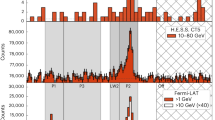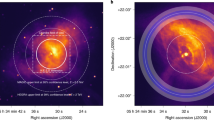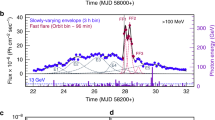Abstract
RECENTLY Vasseur et al.1 reported the possible detection of pulsed gamma emission above 50 MeV from the Crab Nebula. They analysed their data from two balloon flights and stated that the probability of the observed pulsed effects on each flight had a 2 per cent chance of resulting from random fluctuations as they did not know in which of the twenty time channels to expect the pulsation. The overall chance probability for both flights is 0.04 per cent. The purpose of this letter is to point out that their method of analysis leads to a much higher probability for these effects to arise from random fluctuations.
This is a preview of subscription content, access via your institution
Access options
Subscribe to this journal
Receive 51 print issues and online access
$199.00 per year
only $3.90 per issue
Buy this article
- Purchase on Springer Link
- Instant access to full article PDF
Prices may be subject to local taxes which are calculated during checkout
Similar content being viewed by others
References
Vasseur, J., Paul, J., Parlier, B., Leray, J. P., Forichon, M., Agrinier, B., Boella, G., Maraschi, L., Treves, A., Buccheri, R., and Scarsi, L., Nature, 226, 534 (1970).
Fritz, G., Henry, R. C., Meekins, J. F., Chubb, T. A., and Friedman, H., Science, 164, 709 (1969).
Bradt, H., Rappaport, S., Mayer, W., Nather, R. E., Warner, B., McFarlane, M., and Kristan, J., Nature, 222, 728 (1969).
Author information
Authors and Affiliations
Rights and permissions
About this article
Cite this article
DELVAILLE, J., MCBREEN, B. Pulsed Gamma Rays from the Crab Nebula ?. Nature 226, 1233–1234 (1970). https://doi.org/10.1038/2261233b0
Received:
Issue Date:
DOI: https://doi.org/10.1038/2261233b0
This article is cited by
-
Application of Statistics to Results in Gamma Ray Astronomy
Nature (1973)
-
Experiment to detect Pulsed γ-Rays from the Crab Nebula
Nature (1971)
-
Search for Pulsed Gamma Ray Emission above 50 MeV from NP 0532
Nature Physical Science (1971)
Comments
By submitting a comment you agree to abide by our Terms and Community Guidelines. If you find something abusive or that does not comply with our terms or guidelines please flag it as inappropriate.



